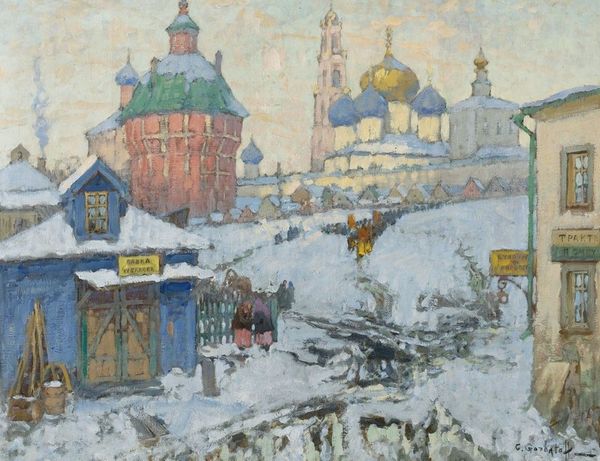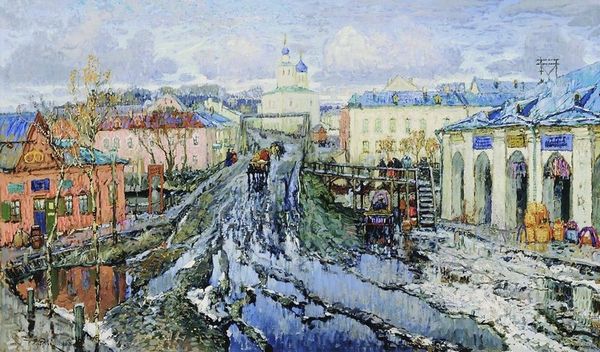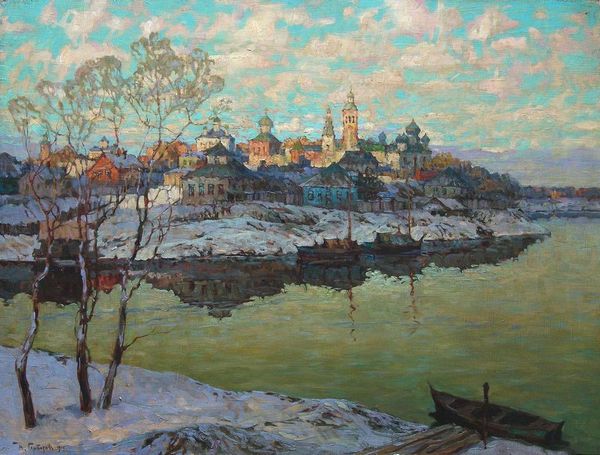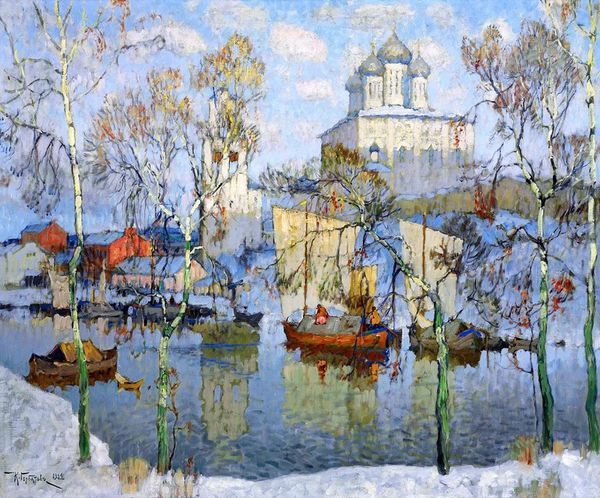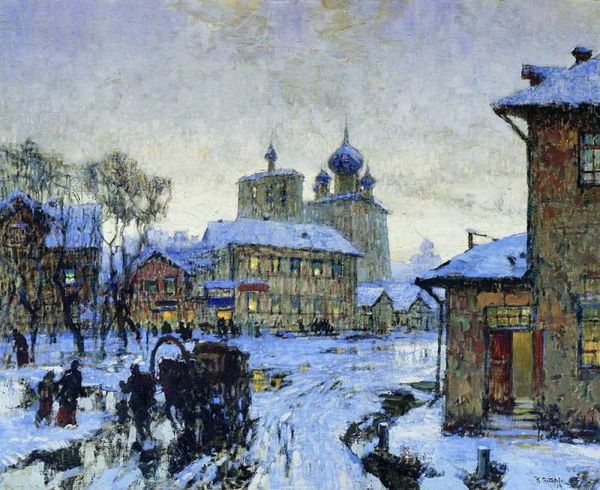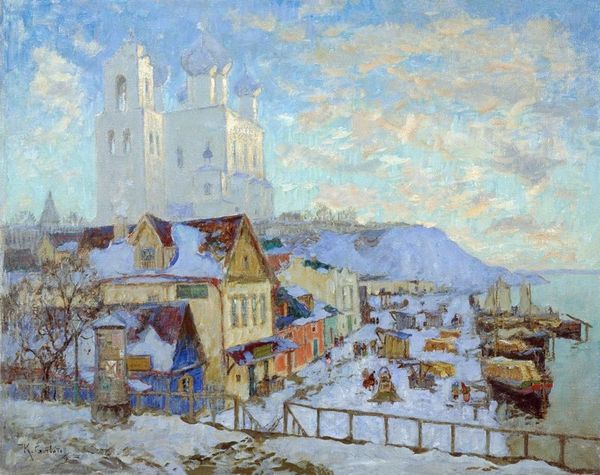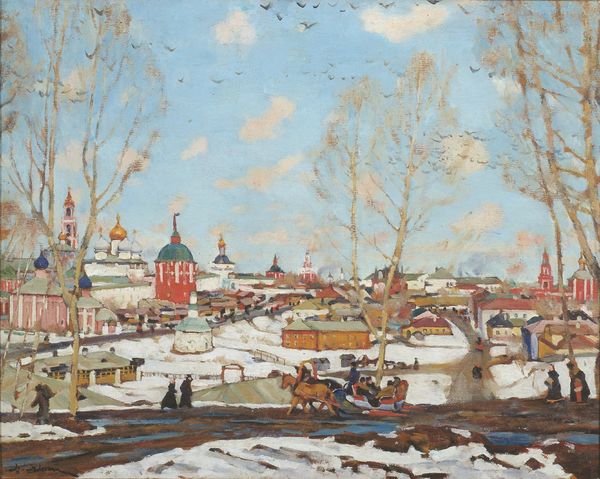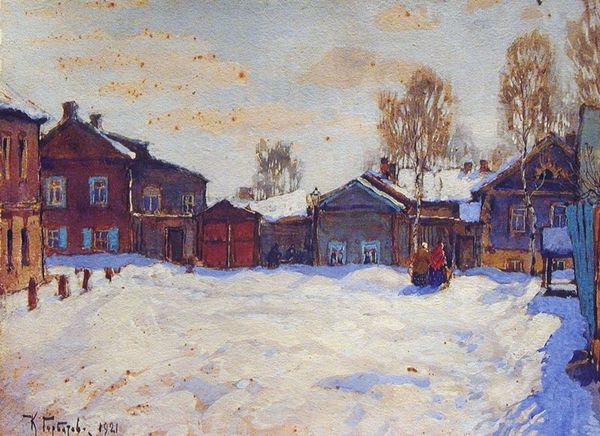
Copyright: Public domain
Editor: This is "Torzhok" by Konstantin Gorbatov, painted in 1917 using oil paint. The wintery scene, the bright colours, and the quaint architecture gives it a cheerful and idyllic mood, even though it was painted during a time of revolution. What stands out to you when you look at this painting? Curator: It's fascinating to consider the duality you point out – this peaceful scene created during the tumultuous year of 1917. Look at the churches: they dominate the composition, speaking to the centrality of religion and tradition in pre-revolutionary Russian society. But Gorbatov was no blind traditionalist. He was part of the Russian Avant-Garde! Does this image reinforce or challenge our ideas of Russian identity at that time? Editor: I think it challenges them. The Russian Avant-Garde was often very radical, and this… isn't. Curator: Precisely! It’s tempting to view the Russian Revolution as a clean break, but art like this reminds us of the complex negotiation between old and new. Notice the presence of ordinary people going about their lives: how might their stories, often excluded from official histories, reshape our understanding of this period? Does this perspective give us any cues about social dynamics, gender, or class? Editor: Well, it appears to depict many average people in an accepting or normal way, at a time of great strife and division. Maybe this inclusivity in everyday life can reshape a more complete and tolerant understanding of the period. Curator: Exactly. Gorbatov gives visibility to what was largely an invisible and unheard demographic in early twentieth century Russia, even amongst the Avant-Garde movement. We must keep interrogating dominant narratives, searching for voices that offer alternative perspectives. What have you gained through our little dialogue? Editor: I definitely see the painting in a new light now. Considering it as a reflection of the push and pull between tradition and revolution, and also focusing on the people in the image rather than just the landscape, gave me some fresh insights. Curator: Yes. By engaging with both the aesthetic qualities and the socio-political context, art offers us a mirror to reflect on ourselves and the world around us, always urging us to ask 'cui bono?' and see past accepted norms.
Comments
No comments
Be the first to comment and join the conversation on the ultimate creative platform.
